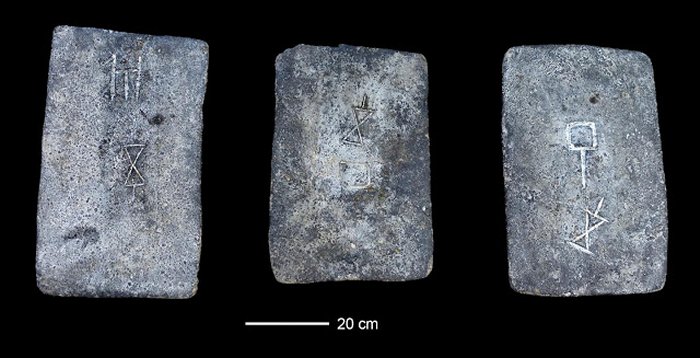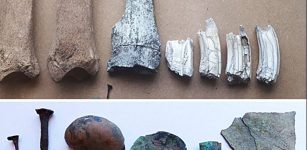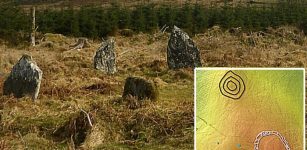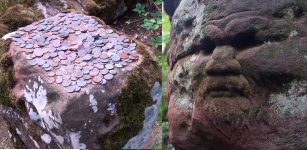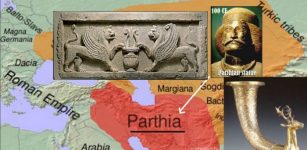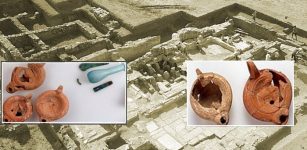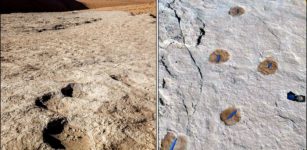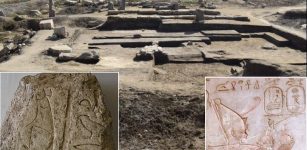Has The Mystery Of Bronze Age Tin Been Solved?
Conny Waters - AncientPages.com - The origin of the tin used in the Bronze Age has long been one of the greatest enigmas in archaeological research. Now researchers have solved part of the mystery.
They were able to prove that tin ingots found at archaeological sites in Israel, Turkey, and Greece do not come from Central Asia, as previously assumed, but from tin deposits in Europe.
Some of the studied tin ingots from the sea off the coast of Israel - Approx. 1300-1200 B.C.
Credit: Ehud Galili
Using methods of the natural sciences, researchers from Heidelberg University and the Curt Engelhorn Centre for Archaeometry in Mannheim have examined the tin from the second millennium BCE found at archaeological sites in Israel, Turkey, and Greece.
Tin deposits on the Eurasian continent and distribution of tin finds in the area studied dating from 2500–1000 BCE. The arrow does not indicate the actual trade route but merely illustrates the assumed origin of the Israeli tin based on the data. Source: Berger et al. 2019t | Prepared by Daniel Berger
The findings are proof that even in the Bronze Age complex and far-reaching trade routes must have existed between Europe and the Eastern Mediterranean. Highly appreciated raw materials like tin as well as amber, glass, and copper were the driving forces of this early international trade network.
See also:
Bronze Age And Iron Age City Complex Once Known As Kummanni Unearthed In Turkey
Mystery Of The British Pompeii Deepens – Bronze Age Settlement Destroyed By Dramatic Fire
Three Bronze Age Chariots, Shields, Daggers And Decorated Coffins Unearthed In Northern India
Bronze, an alloy of copper and tin, was already being produced in the Middle East, Anatolia, and the Aegean in the late fourth and third millennia B. C. Knowledge on its production spread quickly across wide swaths of the Old World.
"Bronze was used to make weapons, jewelry, and all types of daily objects, justifiably bequeathing its name to an entire epoch. The origin of tin has long been an enigma in archaeological research," explains Prof. Dr. Ernst Pernicka in a press statement.
Coffin containing an embalmed ibis Egypt, Ptolemaic Period, 3rd century B.C., Bronze, wood, ibis bones and skull, remains of a linen textile, and amulets. Gift of Anwar el-Sadat, President of Egypt, to Yigael Yadin
Courtesy Israel Museum, Jerusalem
"Tin objects and deposits are rare in Europe and Asia. The Eastern Mediterranean region, where some of the objects we studied originated, had practically none of its own deposits. Based on this study, scientists conclude the raw material in this region must have been imported, and everything indicates tin really did derive from tin deposits in Europe.
Written by Conny Waters - AncientPages.com Staff Writer

